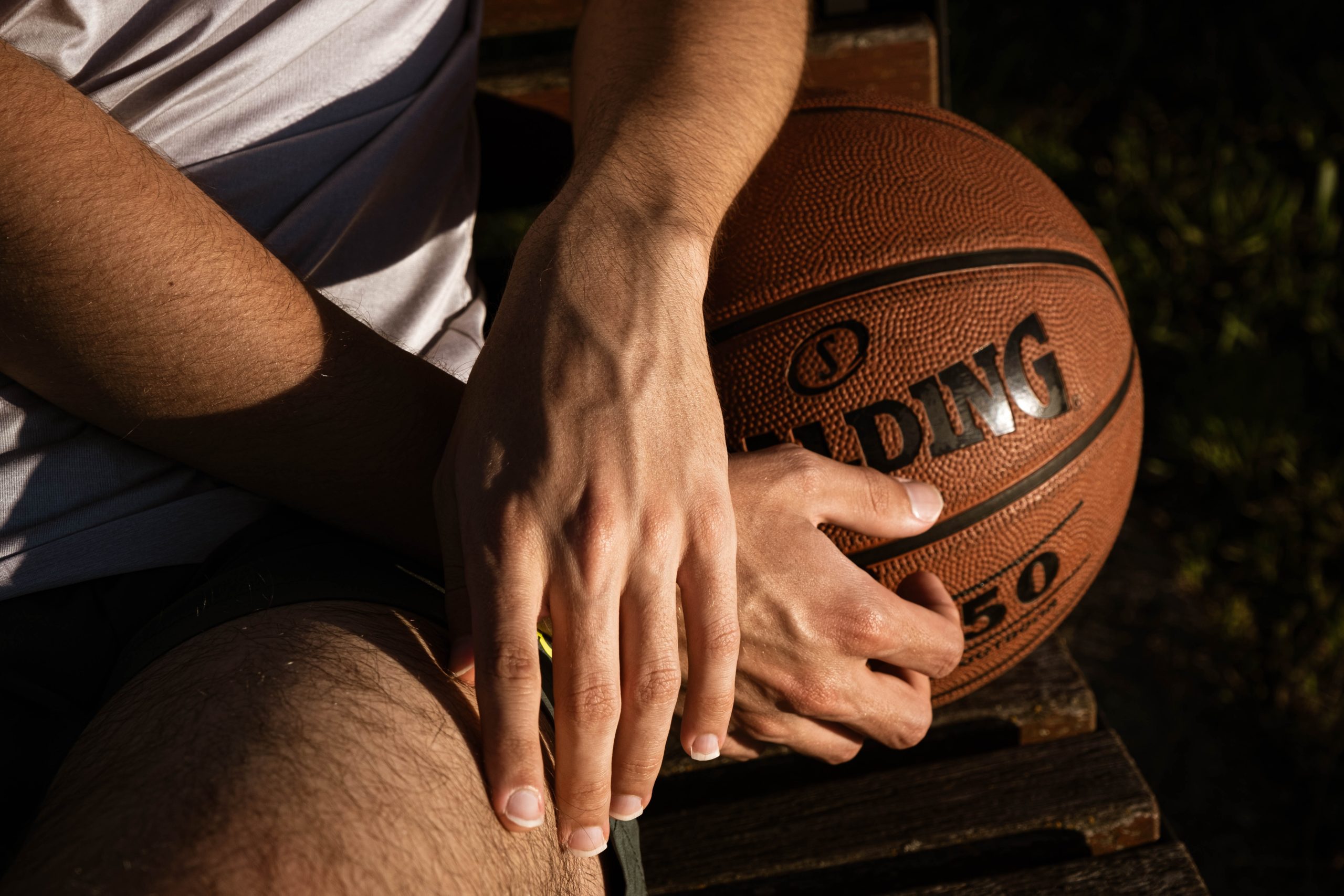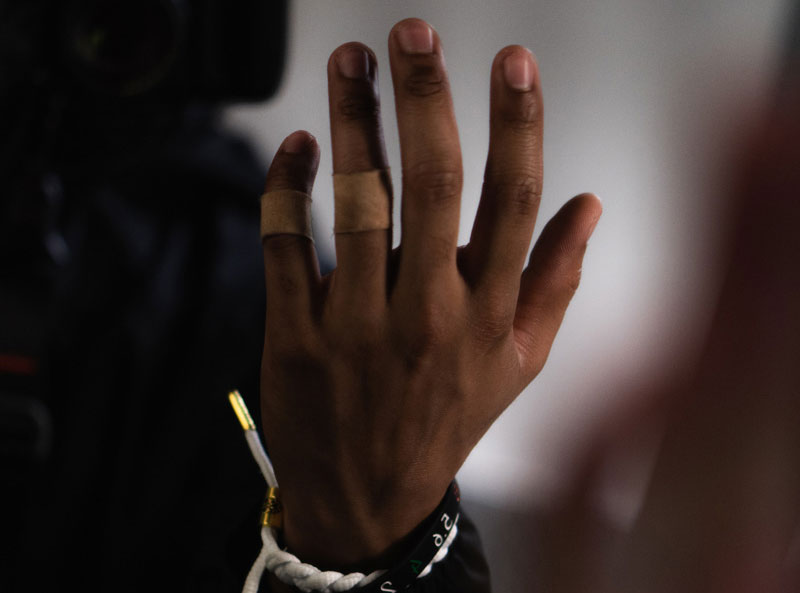If you are an active ball sports athlete, your fingers’ life probably revolves around catching the ball without missing it!
If today wasn’t your good day and you missed the strike by a close shave, it’s all right.
What’s not all right is that the missed strike hit the tip of your finger, leaving it in pain. That being so, you probably injured your finger during basketball!

Sprained finger or jammed finger is a common sports injury that pushes the tip of your finger or thumb away from your palm.
And it does so by directly affecting your finger and thumb ligaments. Ligaments are connective tissues that attach different bones of your fingers. Due to these ligaments, you can move your fingers flexibly across all directions (and pinch your opponents during the game!)
Struggling to Keep Your Fingers Crossed?
If you had a bad day at basketball today and fumbled with your finger, it’s time to hit for a medical assessment.

Typically, an injured finger causes pain, swelling, and difficulty in movement. When left ignored, it might deform your finger permanently.
We understand it seems like a high price you have to pay for missing that strike. Luckily, an injured finger doesn’t last forever. To restrain that injured finger, your health care provider will run a few assessments to identify the degree and type of injury and manage accordingly.
Let us give you a brief overview of two common injuries that lead to a sprained finger.
The Boutonniere Deformity
Boutonniere Deformity is a common form of the finger injury that results from injury to the tendons. If you are unable to straighten the middle joint of your finger and your fingertip tends to bend backward, you might be suffering from Boutonniere deformity. Yes, it can get excruciating, but it is curable. If you don’t want to mess with your finger, the key here is to get your injured finger and possible Boutonniere deformity examined and treated as soon as possible!
Mallet Finger Injury
Can you guess what other names of this injury are? Baseball Finger and Drop Finger! Yes, Mallet Finger is another form of finger and thumb injury that occurs due to the rupture of your finger’s extensor tendon. Mallet Finger results when you go overboard in chasing the ball but end up injuring the tip of your finger or thumb. Did the ball strike hit hard on your fingertip today or thumb? If that’s the case and you cannot straighten your fingertip or thumb, you probably have Mallet Finger Injury. Splinting your finger for 6-8 weeks is the best way to fix this condition. Head on to your doctor right away and get immediate treatment!
Scanning Your Sprained Finger
The scanning process of an injured finger is simple. After a thorough physical examination and based on the degree of ligament injury, your physician will categorize your injury in one of these three levels:
Type I Ligament Injury
This is the mildest condition, and it causes some pain and reduced flexibility across your finger joints. Sounds humane, doesn’t it?
Type II Ligament Injury
Assuming that the basketball smashed hard into your finger, causing a partial tear in your ligament, your finger has probably undergone second-degree sprain! This is paradoxically usually more painful than a complete tear.
Type III Ligament Injury
Type III Ligament injury happens when your ball goes overboard in walloping you, intensely tearing and rupturing your ligament.
In case of intense pain and swelling, your doctor will also suggest an X-ray of the ill-fated finger to rule out a fracture or an MRI to confirm the ligament injury.

Bring Your Injured Finger Back in The Game
The mildly sprained finger comes back in the game within no time. Unfortunately, if your injury is serious then you will have serious issues with basketball or volleyball and the pain and swelling won’t go away.
Here’s what you can do about it:
RICE
RICE is the abbreviated term for the foremost step you should take after spraining your finger (Rest, Ice, Compression, and Elevation).
Using the RICE method, you should give your sprained finger adequate rest and apply ice packs on the affected area. Follow up with compressing the sprained finger and keeping it elevated to prevent further swelling.
Pain Medications
Since pain in the sprained finger is persistent and unbearable, your health-care provider will also recommend some pain killers, such as Ibuprofen and Paracetamol, for temporary relief or something stronger to cope up with the discomfort.
Splinting
Splinting helps if you and your injured finger are still not on good terms. A splint immobilises deeply damaged ligaments and speeds up the healing process.
Surgery
If you and your injured finger fail to get along in every possible way, surgical intervention remains the last resort. Not only does it correct the underlying deformity, but it also brings your finger back in action.
Ready to Lift Your Finger? – Key Takeaways
It’s not unusual for the ball sports enthusiasts to work their fingers to the bone. When assessed early, healing of injured finger joints occurs naturally. If you have accidentally messed up with your finger, and are thinking how to heal an injured finger from basketball on your own, please don’t. Your doctor will examine your injured finger and exclude more serious injuries. In either case, your finger will be treated and healed. Remember, the longer time you take to visit your healthcare provider, the more delayed the treatment process will be, and eventually, the longer it will take for your injured finger to recover fully.
Are you experiencing finger or thumb joint injury similar to any of the conditions mentioned above? Consult our hand care team at (+65 6733 9093) or reach out to us.